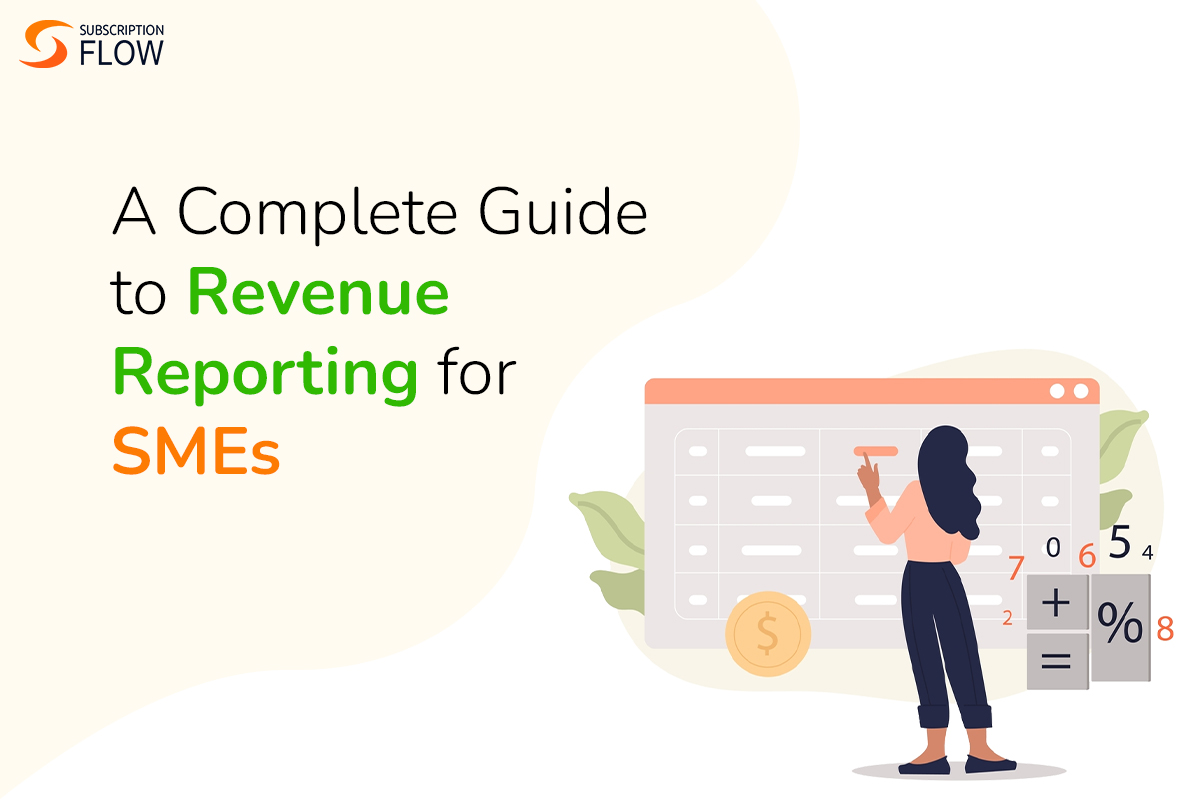
A Complete Guide to Revenue Reporting for SMEs
The importance of closely tracking and understanding your company’s revenue to run a successful business needs no qualifier. Despite this, many startups and SMEs struggle to do justice to their revenue reporting activities.
In the early stages, businesses often simply rely on the volume of sales and bank balance reporting. Albeit, an intuitive starting point, this strategy is in no way sufficient to ensure survival in today’s cutthroat business climate let alone power sustainable growth.
It is vital for small businesses to closely monitor and track their sales, revenue, profit, and cash flow industriously and dynamically to paint a real picture of how well their business is doing. Having a clear and complete picture of your financial standing helps you make better hiring decisions, monitor the performance of your pricing strategy, and allocate resources intelligently.
This blog begins by providing clarity on the essential revenue reports your SME should be tracking. It then delves into effective strategies for leveraging these insights to drive business growth. Additionally, it explores how the implementation of a revenue management software solution can help businesses extract the maximum value from their revenue reports, putting SMEs in the fast lane to success.
Gross Revenue vs Net Revenue vs Net Profit: What are the Differences?
Some revenue-related terminology that is important to clarify upfront is the difference between gross revenue, net revenue, and profit.
- Gross revenue is the total income generated directly from sales activity. It refers to the top-line or gross sales figure before any deductions.
- Net revenue is the income generated from sales with certain expenses deducted. These include refunds, discounts, allowances, or any other adjustments made to sales transactions. With these expenses shaved off, net revenue paints a clearer picture of your business’s real income.
- Profit or Earnings refer to what is left over from your net revenue after all relevant deductions including operating costs, taxes, interest, and depreciation. This final financial outcome depicts how much money was made or lost in a specific financial period.
Three Core Reports Used in Revenue Reporting
Three of the following reports are most commonly tracked to assess a business’s revenue generation performance on a quarterly or annual basis:
1. Profit and Loss (P&L) Statement
A P&L statement is a financial statement that summarizes the revenue, costs, and expenses incurred during a quarter or fiscal year. It indicates the company’s profitability by growing revenue or cutting costs during the specified period. P&L statements may be executed on a cash or accrual basis.
2. Balance Sheet
The second core financial revenue report is the balance sheet which outlines the assets, liabilities, and shareholder equity of the company at a certain point in time. It offers a snapshot of what the company owns vs what it owes. This is important for company appraisals.
3. Cashflow Statement
Intuitively, a cash flow statement tracks the money flowing in and out of a company during a certain period. Since realized earnings come in after bookings, a lag between cash flow and earnings is expected particularly in connection to refunds and chargebacks. This lag can create an uncomfortable cash crunch if your company is not following revenue reporting best practices.
Leveraging Revenue Reporting for Business Growth
Revenue reports can be leveraged to fuel business growth by:
1. Identifying Your Revenue Drivers
Robust revenue reports provide a clear picture of your primary sources of revenue and offer key insights into the performance of your offerings and customer segments.
Analyzing revenue data helps identify the key drivers of revenue growth so your SME can allocate the lion’s share of its resources to maximize those lucrative areas and save you from wasting resources in areas that are not as promising. In this way, strategic decision-making and smart resource allocation informed by revenue reports can help actualize scalable growth for your business.
2. Optimizing Your Pricing Strategy
The right pricing strategy is critical in opening up your sales funnel, maximizing your revenue generation capacity, and promoting long-term customer retention. Through dynamic revenue reporting you can assess the price elasticity of your products and services i.e., the responsiveness of demand to price fluctuations.
Experimenting with price periodicity and different pricing models such as flat-fee, tiered, volume-based pricing, etc., allows you to discover the optimal price point and pricing structure for your subscription offering that maximizes profits.
Additionally, by analyzing revenue data alongside cost information, businesses can also identify underperforming products. Leveraging insights from customer cancellation surveys can further fuel product-led development and improve profitability in the long run.
3. Offering Insights into Your Customers
Revenue visibility allows businesses to understand the revenue contribution from different customer segments. Customer segmentation based on buying behavior, demographics, or preferences can be done through subscription management software such as SubscriptionFlow.
This allows businesses to tailor their marketing and sales efforts to target high-value customer segments. This targeted approach results in higher conversion rates, customer satisfaction, and revenue generation.
4. Accurately Forecasting Your Sales
Automated revenue management and reporting allows your business to forecast revenue, set realistic targets, and prevent losses from overspending in slow growth periods.
Analysis of historical revenue data offers key business insights in the form of trends, seasonality, and consumption patterns. This forecasting capability enables effective financial planning and resource allocation.
Read More: A Complete Guide on SaaS Sales Forecasting
5. Monitoring Your Financial Performance
Close tracking of revenue also enables the monitoring of financial performance against set goals and benchmarks. Any deviations, underperforming areas, or emerging opportunities can quickly be identified and exploited to the maximum. This real-time visibility enables timely course correction, strategic adjustments, and proactive measures to drive revenue growth.
6. Increasing Investor and Stakeholder Confidence
Revenue management also instills confidence in investors, lenders, and stakeholders. Accurate and transparent revenue data demonstrate a strong financial foundation and growth potential, attracting investment, partnerships, and support for business expansion.
Get the Most Out of Revenue Reports with a Revenue Management Software
Revenue management software simplifies the process of aggregating and analyzing complex revenue data.
- With automated data collection from multiple sources integrated into a centralized system, your business saves precious time and effort in gathering relevant information.
- The software also provides intuitive analytics tools that enable in-depth examination of revenue patterns, trends, and performance metrics. This empowers businesses to gain actionable insights swiftly.
- Real-time updates mean the metrics on your dashboard are always relevant and reflect the health of your revenue generation machine.
- Historic data, market trends, and predictive analytics are used to generate precise revenue reports automatically, and your business can also generate custom reports for bespoke business needs.
- The software also streamlines internal communication as customizable dashboards and intuitive visualizations, reflecting revenue performance can be efficiently shared with internal teams, investors, and partners.
- Advanced data analysis and segmentation capabilities, allow businesses to identify customer segments, products, or services that contribute significantly to revenue growth. This insight allows targeted marketing efforts, tailored product offerings, and improved customer experiences, leading to an accelerated revenue drive.
Final Word
In conclusion, the three core reports commonly used in revenue reporting include the Profit and Loss (P&L) statement, the balance sheet, and the cash flow statement. These reports provide valuable insights into profitability, financial standing, and cash flow dynamics, enabling businesses to make informed decisions and plan for the future.
Small businesses need to diligently and dynamically track their revenue to enable better hiring decisions, monitor pricing strategies, and allocate resources intelligently. Revenue management software serves as a valuable tool in this process, simplifying data analysis, streamlining reporting, and providing actionable insights that propel businesses toward sustainable revenue growth.










